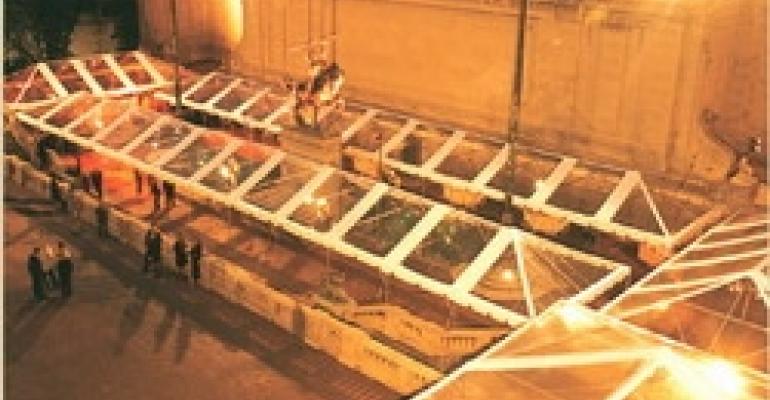The style of tent that you select should be a key decision in your event planning, creating a safe, comfortable environment that is protected from the elements as well as helping to set the stage and mood for where all the action will take place. Understanding the basic benefits and uses--and, in some cases, the limitations--of the different styles of tents available today can be useful as you envision how your event will take shape. Here are some important-to-know features for each of the four major categories of tents offered by most tent professionals:

The most popular style for smaller events is the traditional pipe frame tent, as these tents are cost-effective, versatile and easy to customize. Lightweight, they can be assembled remotely and walked into place. Frame tents still need to be anchored, but they can be weighted down and installed without stakes and without internal poles. This makes them a good choice for covering decks, patios and terraces. The only major drawback is their size--the largest width accommodated safely is 40 feet. Pipe frames are also limited in their ability to withstand the elements, as most are not rated for high wind or snow load. Traditional pipe frames are ideal for small backyard parties or as support tents for large events, where they can be used to station field kitchens, reception areas, coat checks, restrooms and other stand-alone functions that can occupy smaller spaces.
Used for centuries and once a mainstay of the industry, rope and pole tents are now being phased out in the planning of both large-scale and upscale events for several practical reasons. Most do not meet current building code requirements; they are not rated for wind and snow load; and they generally require too many interior support poles. However, the pole tent is the least expensive tenting option and comes in a variety of sizes. For picnics and festivals, this style remains the cost-effective tent of choice.

The pleasing shape of tension structure tents provides a sophisticated look that is in great demand for high-end events. These tents are engineered structures (hyperbolic parabaloids) that are rated to withstand wind loads up to 70 mph. They are available in larger sizes, up to 120 feet wide and virtually any length. Requiring fewer internal poles than traditional rope and pole tents, tension structures are a good choice for any type of large-scale event, from private weddings to gala fundraisers.

Engineered to handle a 75-mile-per-hour wind load, clear-span structure tents offer a number of key advantages and are quickly becoming the style of choice for most event planners. They can stand up to 165 feet in width and 17 feet in eave height without the support of interior columns. They can also be anchored with water ballasts or cement gravity blocks, eliminating the need for stakes. Clear-span structures are ideal for large, upscale corporate functions and sporting events as well as for longer term use in which tents need to remain standing for more than several days. Not surprisingly, they are the most expensive of the four tent styles, requiring heavy machinery and more time to install.
Traditional pipe frame, rope and pole, tension structure and clear-span structure tents cover the full range of tent styles available today, each offering a number of options in size, color, material and configuration. (You may come across different names of tents, especially as you search the Web sites of different tent companies, but these will most likely be brand names, not industry-standard categories of tents.) Be sure to consult with your tent company early in the planning stages to create tenting scenarios that help define your needs and safely set the stage for a successful event. Visit Stamford Tent & Event Services at www.stamfordtent.com.





